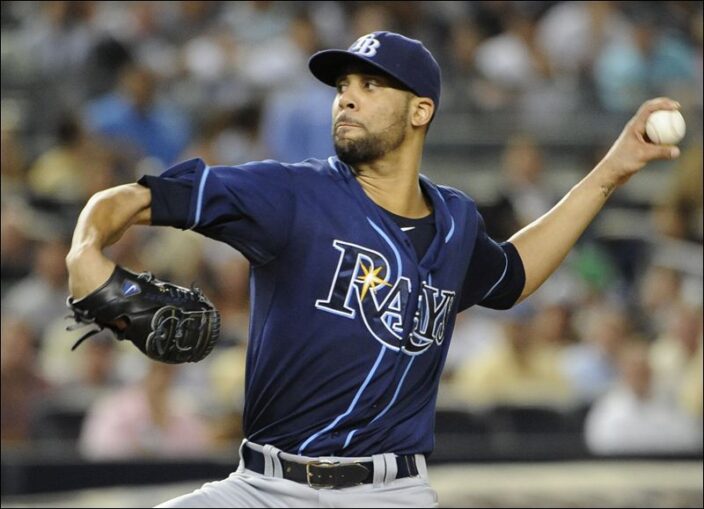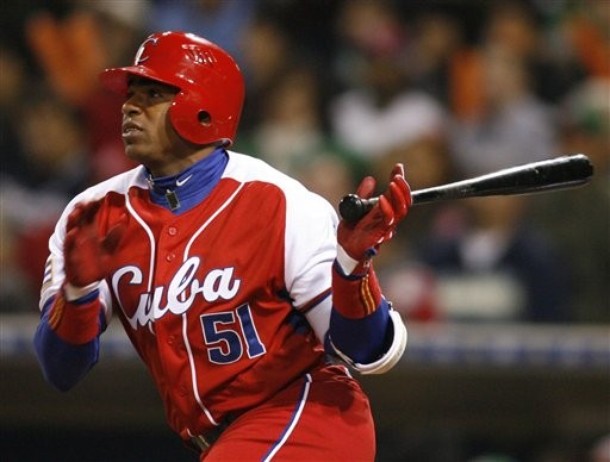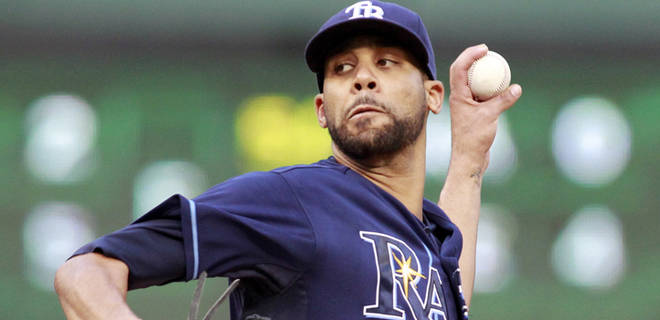Debunking a myth – how the Tampa Bay Rays and Oakland A´s have built perennial contenders as small market teams
With the Mets caught in a massive financial restructuring and – apparently – unable and / or unwilling to compete for high-end free agents this winter, the Tampa Bay Rays & Oakland A´s are often referred to as models of how you can win with a small payroll.
And indeed, both teams have had stunning success over the past couple of years, both winning 90+ games in back-to-back years in 2012 and 2013. The Rays did it with payrolls in the $57 to $70 million range, and the A´s with payrolls of $59 to $68 million. Meanwhile, our New York Mets – who haven´t won 90+ games in back to back seasons since the days of Mike Piazza & Bobby Valentine in 1999 & 2000 – finished 74-88 in each of the 2012 and 2013 seasons. A closer look shows that with payrolls between $90 and $100 million in 12-13, almost half of it was allotted to sunken costs like Jason Bay & Johan Santana, so essentially if you leave out those two relics, the Mets actually spent a bit less than the small market Rays & A´s, but that´s not the point of this post.
What I´ll try to explain is that there´s a myth that these two teams were supposedly built in a miraculous way of signing inexpensive scrap heap veteran players that suddenly outperformed all expectations. This is wrong. Sure, both teams have rarely spent significant money on veteran relievers, realizing that this is a place where it´s more efficient to go cheap – be it from within or the scrap heap. And both did well with a couple of inexpensive free agent pickups, most notably the A´s with RHP Bartolo Colon and 1B/DH Brandon Moss, and the Rays with 1B James Loney. But those players were certainly not the reason they succeeded. It was mainly done via drafting or trading for prospects and developing them properly.

1. How The Rays Were Built
The Rays M.O. has been to build around pitching recently. And that´s not only in terms of winning with pitching on the field but using pitching to the advantage of filling holes via trades.
Take a look at some of the key members of the 2012 / 2013 staffs:
LHP David Price – Drafted # 1 overall in 2007
LHP Matt Moore – Drafted in round 8 in 2007
RHP Alex Cobb – Drafted in round 4 in 2006
RHP Jeremy Hellickson – Drafted in round 4 in 2005
LHP Jake McGee – Drafted in round 5 in 2004
RHP Chris Archer – Acquired as a prospect from from the Cubs in 2011 in exchange for young RHP Matt Garza (after 4 years of team control) who had been acquired with the Rays 2003 first round pick Delmon Young a few years earlier.
LHP Alex Torres – Acquired as a prospect out of High-A Ball from the Angels at the 2009 trade deadline for LHP Scott Kazmir (after 4 years of team control) who had been acquired for…, err, won’t get into that.
To summarize: This staff was mainly put together by strong drafting between 2004 and 2007 and by trading for prospects between 2009 and 2011.
Now, offensively, the Rays were more mix & match and not as deep structurally. That said, the M.O. remains similar:
3B Evan Longoria – Drafted 3rd overall in 2006 draft.
CF Desmond Jennings – Drafted in round 10 in 2006
IF/OF Ben Zobrist – Acquired as a prospect in 2006 from the Astros for former Rays All Star third baseman Aubrey Huff.
RF Wil Myers – Acquired as a top prospect in 2012 from the Royals for RHP James Shields (after 5 years of team control) who had been an undistinguished 16th round pick by the Rays in 2000; this trade has also brought in RHP Jake Odorizzi and LHP Mike Montgomery from KC who may eventually help the Rays pitching staff going forward.
LF Matt Joyce – Acquired as a prospect in 2008 by Rays for young RHP Edwin Jackson (after 4 years of team control).
SS Yunel Escobar – Acquired from the Miami Marlins in 2012 for OF prospect Derek Dietrich, the Rays 2nd round pick in 2010, reversing the prospect for veteran path for a change.
To summarize: This offense was built around drafting well in 2006 and trading major leaguers for prospects between 2006 and 2012, plus trading a prospect for a proven major leaguer last winter. And of course, aided by signing useful veterans like James Loney, Jose Molina and Kelly Johnson who rounded things out.
The Rays have been built around a plethora of strong players drafted 6 to 9 years ago and players mostly acquired as prospects turned into good major leaguers. It does serve as an indication for the time frame it takes to build a team like this, of course. By the way the 2004 to 2007 Rays won between 61 and 70 games per season…

2. How The Oakland A´s Were Built
To avoid the post becoming too lengthy (and with my 2 year-old daughter about to wake up), I´ll try to keep myself short. But please remember that the post “Moneyball” (1999 to 2006) A´s finished at or below .500 between 2007 and 2011 and was widely expected to finish below .500 again in 2012 – before winning 94 games, seemingly out of nowhere. Unlike the Rays, the A´s 2012 / 2013 weren´t mainly built via the draft – but they were built by heavy trading for prospects…
Pitching:
Yes, Bartolo Colon was an almost R.A. Dickey type revelation, seemingly out of nowhere.
And half of the A´s rotation was actually drafted – A.J. Griffin (round 13 in 2010), Dan Straily (round 24 in 2009) and Sonny Gray (round 1 in 2011). But key pieces of the staff were acquired in trades:
RHP Jarrod Parker and RHP Ryan Cook in a trade for former 2006 2nd round pick RH Trevor Cahill
LHP Tom Milone in a trade for LHP Gio Gonzalez
LHP Jerry Blevins in a trade for C Jason Kendall, way back in 2007
Disappointing LHP Brett Anderson came in a trade of RHP Dan Haren who himself can be tracked back to trading former stud LHP Mark Mulder to the Cardinals.
To be fair, another key contributor , RHP Grant Balfour was signed as a free agent. But overall, you can track the main pieces of the Oakland A´s staffs to drafting & trades of quality starters Gio Gonzalez, Dan Haren (and previously Mark Mulder) and Trevor Cahill.
Offense:
Trades. Trades. Trades. Oh, and Coco Crisp & Yoenis Cespedes as free agents for more than Sandy Alderson has paid to anyone as Mets GM so far and Brandon Moss as a nice scrap heap pickup. But again, you´ll see that the trades of Gio Gonzalez, Dan Haren and others played a key role here:
3B Josh Donaldson – acquired from the Cubs in a trade of former ace Rich Harden (a 17th round pick by the A´s in 2000)
OF Josh Reddick – acquired from the Red Sox in a trade of former closer Andrew Bailey (a 6th round pick in 2006)
SS Jed Lowrie – acquired from the Houston Astros in a trade for prospect 1b Chris Carter who had been part of the Dan Haren trade and for RHP Brad Peacock who had been part of the Gio Gonzalez trade; by the way, Gio Gonzalez had been acquired for “Moneyball” 2002 1st round pick Nick Swisher in 2008….
2B Eric Sogard – also acquired for a piece from the Dan Haren trade, OF Aaron Cunningham, Sogard was actually drafted by the San Diego Padres in 2007…
C Derek Norris – also acquired as part of the Gio Gonzalez trade after the 2011 season
OF Seth Smith – acquired in a trade with the Rockies of waiver pickup and LH Josh Outman (who himself had been acquired for “Moneybal” RH Joe Blanton)
OF Chris Young – acquired for SS Cliff Pennington, the A´s 21st round pick in 2005
So summarize:
Large chunks of the A´s offense can be tracked to the trades of almost an entire rotation of Dan Haren, Rich Harden, Gio Gonzalez, Joe Blanton and Mark Mulder essentially.
What to conclude from all this?
Inexpensive playoff teams aren´t built around picking up veterans from the scrap heap. They are built the traditional way by good scouting & player development. You can build a strong cost-efficient team by drafting well and some trades (Rays). You can build a strong cost-efficient team by drafting ok but trading very well (A´s). It also shows that this approach takes quite a while. And that the groundwork of winning in 2012 & 2013 was mostly laid several years ago and actually the key contributors mostly entered pro-ball between 2004 and 2008. And if you´re asking for a reason why the Mets have struggled over the past 3 to 5 years ? It´s because they failed to add enough significant players between 2004 and 2008 AND have been unable to outspend those neglects recently.
But if you want to win without spending money, you need: a) patience – as it takes about 5 to 7 years before players that are brought in as amateurs will reasonably be productive in the majors. And b) to either draft and/or trade well to land those players.















